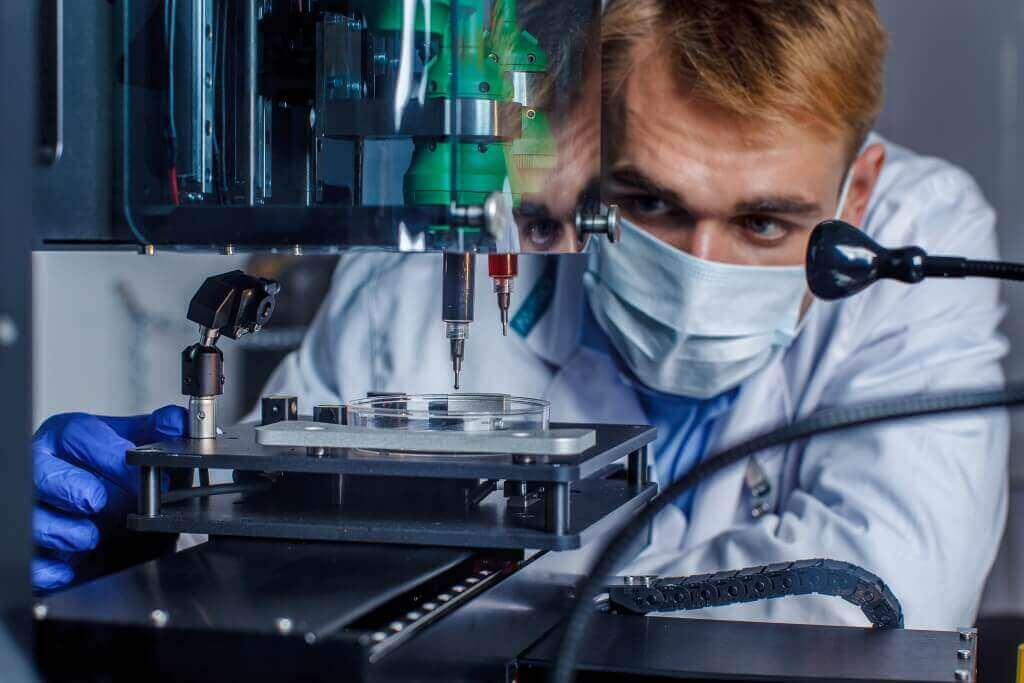This could be a breakthrough in medical research: The first-ever 3D printed thyroid gland was announced by Russia’s 3D Bioprinting Solutions on March 12th this year. It will be implanted in a mouse and studied. If the 3D printed gland is working, this could improve and save thousand’s lives.
“This is undoubtedly a breakthrough in the world of regenerative medicine. We have successfully demonstrated the possibilities of Russia’s first bioprinter, and we’re continuing our validation work, systematically testing and optimizing our technology for 3D organ bioprinting,” said the bioprinter’s developer Vladimir Mironov.
An important node of your body

Thyroid glands can be found in all vertebrates. They control how quickly the body uses energy, creates proteins, and controls how sensitive the body is to other hormones. So this nodal point in an organism, when not working properly, can mess up a lot, and the symptoms are very diverse.
Thyroid disorders are very common in our modern society, mainly including hyperthyroidism (too many thyroid hormones produced), hypothyroidism (too few thyroid hormones produced), or tumors. Thyroid cancer is the 16th most commonly diagnosed form of cancer. Millions are suffering from other thyroid disorders.
The technology has still to prove itself

The firm 3D Bioprinting Solutions unveiled its 3D bioprinter to the public at the Open Innovations Forum in the Russian capital October 14-16 in 2014. While bioprinting research is a rapidly growing scientific field in many nations, the Russian company was the first to announce the successful print of a whole organ this March. While that could be a big leap for mankind, the technology has still to prove itself.
The mouse that will get the 3d printed gland implanted suffers from an artificially created lack of thyroid hormones. Now that it is ready for transplantation, its organism must accept the thyroid gland created in a bioprinting machine. But that seems to be very likely as the printed organ is made of mouse’s stem cells that were taken from its fat cells. When finally the artificial gland produces a considerable amount of hormones, the research is a huge success – probably for all of mankind. Or, to express it with Mironov´s own words: ”If the level of hormones gets back to normal, we will be celebrating with champagne.”
A relatively simple structure

The scientists working for 3D Bioprinting Solutions say they chose the thyroid gland because of its relatively simple structure. If the process of printing and implanting thyroid glands proves to be possible and repeatable, the released results of the study that will be presented to the general public at the Second International Congress on Bioprinting in Singapore on July 9-10 could make even bigger headlines than the announcements of the first successful 3d printed organ for an animal.
The bioprinter works by distributing so-called tissue spheroids, or bio-ink, in successive layers in a kind of gel support structure. The bio-ink is placed with an extruder very similar to the process of 3d printing plastic layer by layer. Instead of heating plastic, its extruder is a syringe- or pipette-like device. The gel is later washed away when the final organ is completed.
The video, unfortunately in Russian, but mostly self-explanatory (and you can watch it with translated subtitles), shows the whole process:
3D Bioprinting Solutions makes claims to be 3d printing other organs in the future, too.
By 2018, they want to present a 3d printed kidney. Time will show if they follow through or if any competitors will be making a foray.
License: The text of "The first 3D printed thyroid gland" by All3DP is licensed under a Creative Commons Attribution 4.0 International License.